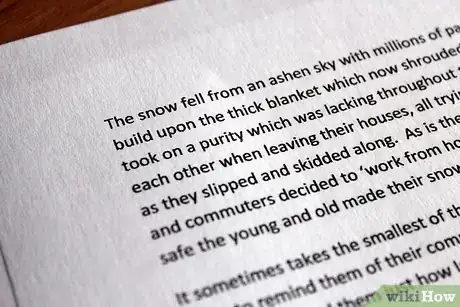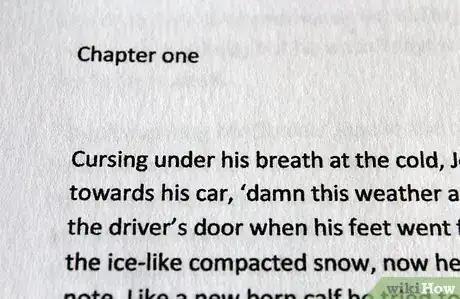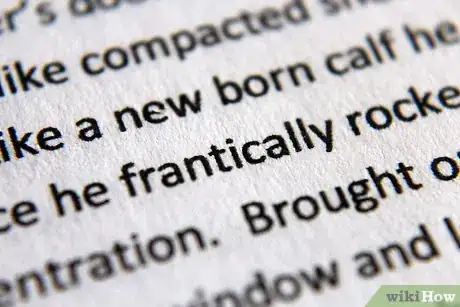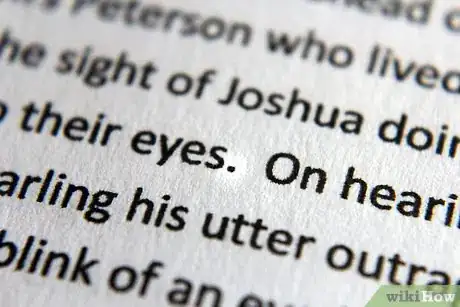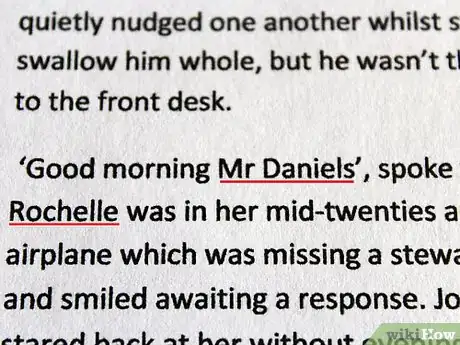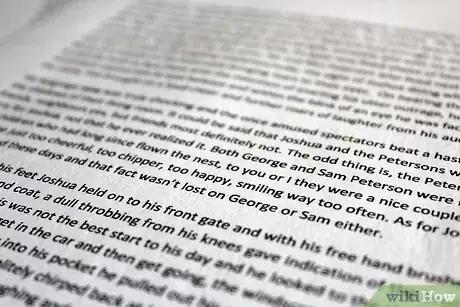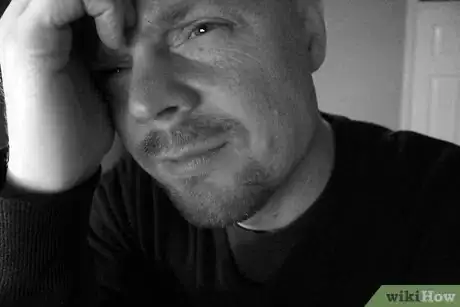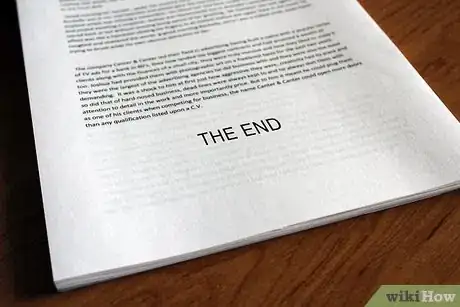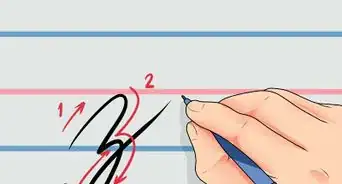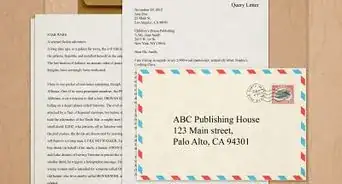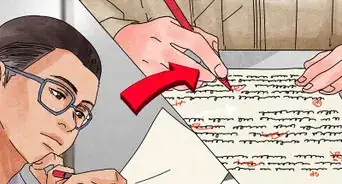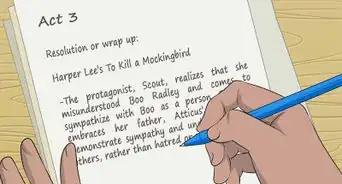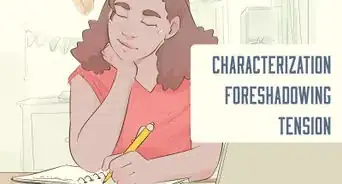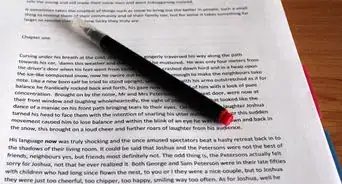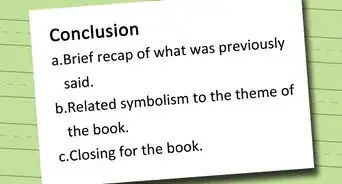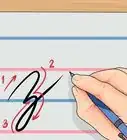X
wikiHow is a “wiki,” similar to Wikipedia, which means that many of our articles are co-written by multiple authors. To create this article, 14 people, some anonymous, worked to edit and improve it over time.
This article has been viewed 72,906 times.
Learn more...
Do you have a great plot for a story, but can't seem to make it sound good in words? Don't worry! This happens to a lot of people - but here's a few steps that could help you.
Steps
-
1Make sure that your story has a title, plot, problem, closing, and a setting. Does it all make sense? How are your characters involved? Don't start writing until you have a good plan for your story. Ask others if they think it's good.[1]
-
2The beginning of you story/book should have a little background on your character(s) and setting, and also a description. You want to paint a mental picture for your readers so they know what's going on.Advertisement
-
3Make the first few sentences/paragraphs exciting and detailed to catch your reader's attention. This will make them want to read further.[2]
-
4As you write, use a lot of adjectives and elaborate your words. Instead of saying "The elephant I saw was big.", say "The colossal elephant that stood before me was amazing; ivory tusks gleaming in the sunlight, its intelligent brown eyes gazing deeply into mine." Makes a difference, huh?
-
5Always remember to use proper punctuation, and don't write SO detailed that your readers get confused.
-
6Remember to follow through with your plot and characters. Don't introduce a character and then never mention it for the rest of the story. Give each setting and character an entrance and exit (unless your main character(s) are at the very beginning and end of the story.[3]
-
7Be consistent. Don't start your story as a scary tale and then make it into a comedy.
-
8Write so that when you read it over, you can see a picture in your brain of what is happening. Describing the setting is most important:
- What can the character(s) see? What does it look like? Describe color, lighting, movements, people and depth.
- What can they feel? What does it feel like? Describe texture, temperature, wetness/dryness and shape.
- What can they hear? What does it sound like? Describe the way people speak, background sounds (birds, wind) and other sounds.
- What can they smell? What does it smell like? Describe what it smells like, if it smells good or bad and what they are smelling.
- What can they taste? What does it taste like? Describe if it tastes good or bad and what they are tasting.
- Never overdo description. Readers have a good enough imagination to get most of a scene in their head. Use description as a base for action.
-
9Point of view! Point of view! Focus on your characters. If you end up telling the story of another character, try switching to their point-of-view so we can see it through their eyes.[4]
-
10Elaborate terms. Instead of saying, "I went back into my mind, trying to find that moment.", say, "I raced back into my memory, searching with desperation to find that moment." Adjectives can easily be over-done, but if you do them right it's a great effect. Try to use few "-ly" words.[5]
-
11Pacing. A simple concept that takes a lifetime to master- in general, balance the exciting parts of the story with the dull and necessary parts. Keeping a reader engaged is an art form, and it requires thinking about your intended audience and what they want to hear. Try to make the climax of the story (Ex: a battle, a journey, etc.) just before the closing, but calm things down as you reach the end.
-
12When you do end your story, be sure that you don't leave any loose ends, unless there is supposed to be a twist (or a sequel). Read over it and check that everything was summed up, and that your main closing is satisfying overall and you will land a bestseller, or would you?
Advertisement
Community Q&A
-
QuestionHow do I write a story from a picture?
 Community AnswerStart by looking at the picture or imagining it in your head. Then, start describing the picture in the greatest detail that you can. Think about how that picture might inspire a story and jot down your thoughts; later on you can turn those notes into a full story.
Community AnswerStart by looking at the picture or imagining it in your head. Then, start describing the picture in the greatest detail that you can. Think about how that picture might inspire a story and jot down your thoughts; later on you can turn those notes into a full story. -
QuestionWhen should I use capitals in dialogue?
 Community AnswerYou can use them to show when someone is shouting or yelling.
Community AnswerYou can use them to show when someone is shouting or yelling. -
QuestionIf I want to write a series, how do I keep the same plot going for many books?
 Read4everCommunity AnswerA plot can be lengthened by adding more scenes for character development or building on the characters' lives. A popular way to keep the audience wanting more is cliffhangers. Cliffhangers end the book with a stunning or interesting plot twist, like the main character being captured, which will make readers anticipate the next book.
Read4everCommunity AnswerA plot can be lengthened by adding more scenes for character development or building on the characters' lives. A popular way to keep the audience wanting more is cliffhangers. Cliffhangers end the book with a stunning or interesting plot twist, like the main character being captured, which will make readers anticipate the next book.
Advertisement
Warnings
- Don't put in too much dialogue. It's confusing!⧼thumbs_response⧽
- Don't go crazy with the adjectives. It will sound silly.⧼thumbs_response⧽
- If someone doesn't give you the opinion you wanted, don't get angry. Ask them what was wrong and edit.⧼thumbs_response⧽
- Descriptions are good- beating a dead horse is bad. Only the most important scenes will require all five senses. Your reader has an imagination- let them fill in the blanks!⧼thumbs_response⧽
Advertisement
References
- ↑ https://www.grammarly.com/blog/story-plot/
- ↑ https://www.csuchico.edu/slc/_assets/documents/writing-center-handouts/how-to-write-an-introduction.pdf
- ↑ https://www.grammarly.com/blog/story-plot/
- ↑ https://www.grammarly.com/blog/how-to-write-a-story/
- ↑ https://grammar.yourdictionary.com/word-lists/list-of-descriptive-words.html
About This Article
Advertisement

